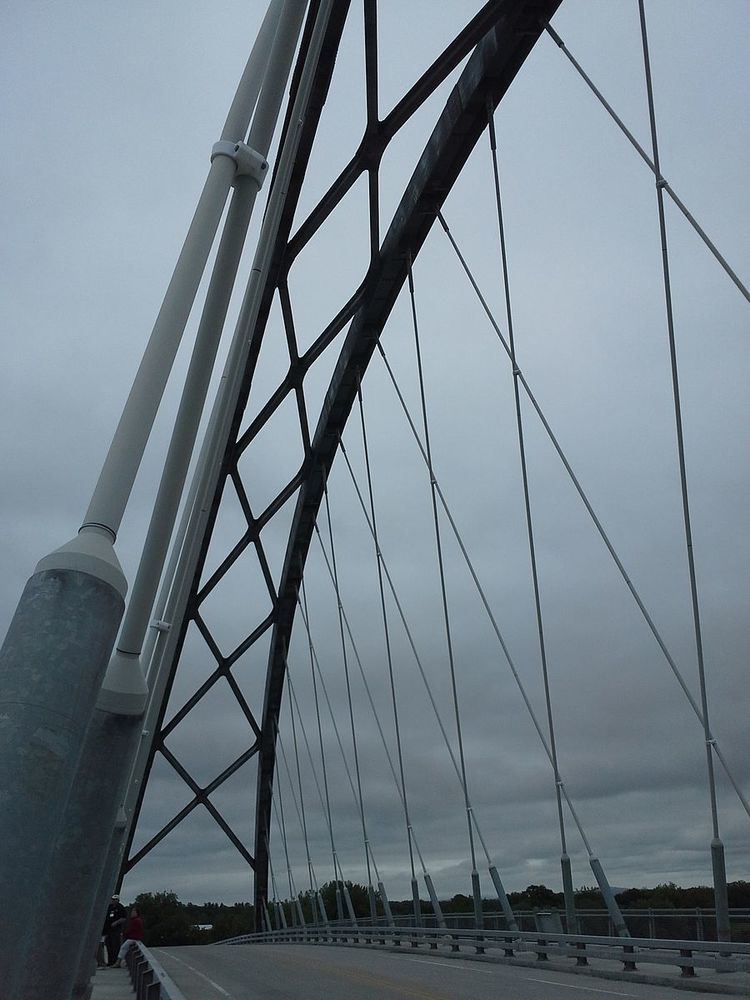 | ||
Similar Tied‑arch bridge, Fehmarn Sound Bridge, Through arch bridge, Blennerhassett Island Bridge, Troja Bridge | ||
Mangamahu network arch bridge
A Network Arch Bridge is a tied arch bridge with inclined hangers that cross each other at least twice.
Contents
- Mangamahu network arch bridge
- Proposed baagmati network arch bridge numerical model
- Structure
- History
- Advantages
- Difference to Nielsen Lohse Bridges
- More examples
- References
Proposed baagmati network arch bridge numerical model
Structure
The inclined hangers with multiple intersections make the network arch bridge act like a truss, with only axial compressible and tensile forces. Bending moments and shear forces are very small in network arches.
The hanger arrangement is what separates network tied arch structures from other types of tied arches, such as those with vertical hangers. It is defined by the number of hangers, hanger inclination and hanger distance. A radial hanger arrangement provides an efficient structure, as shown by Benjamin Brunn and Frank Schanack in 2003. In the radial hanger arrangement the distances between the upper hanger nodes and the angle between hangers and arch remain constant. In order to avoid too long hangers this angle may be increased towards the bridge ends.
History
The network arch idea was developed by the Norwegian engineer Per Tveit in the end of the 1950s.
Advantages
Because both the arch and the tie are mainly subject to axial forces, their cross sections can be very small. Usually, transverse bending in the deck is bigger than bending in longitudinal direction. Therefore, a concrete deck that spans between the arches is a good solution for bridges with arch distances that are not too large. The concrete deck has longitudinal prestressing tendons in the arch planes.
Difference to Nielsen-Lohse-Bridges
In Japan, tied arch bridges with crossing hangers are wrongly called Nielsen-Lohse bridge. Engineer Octavius F. Nielsen applied for a patent on tied arches with inclined hanger rods in 1926. This bridge type was then built about 60 times, primarily in Sweden. None of these bridges had crossed hangers.
Lohse bridges have a tie conversely curved to the arch. The bridge deck is supported by a third structural element hanging underneath. They are named for the German engineer Hermann Lohse (1815–1893) who developed them in the late 19th century.
Thus, it can be recognised that the name Nielse-Lohse is not correct for tied arches with inclined hanger crossing each other multiple times. Furthermore, the archetype of the Japanese network arches is the Fehmarnsund Bridge, Germany, which itself is based on the network arch idea.
The correct name of tied arch bridges with inclined hangers that cross each other at most once is Nielsen bridge. Tied arches with hangers with multiple intersections are network arch bridges. This strict rule is justified, because it leads to a more efficient structure.
